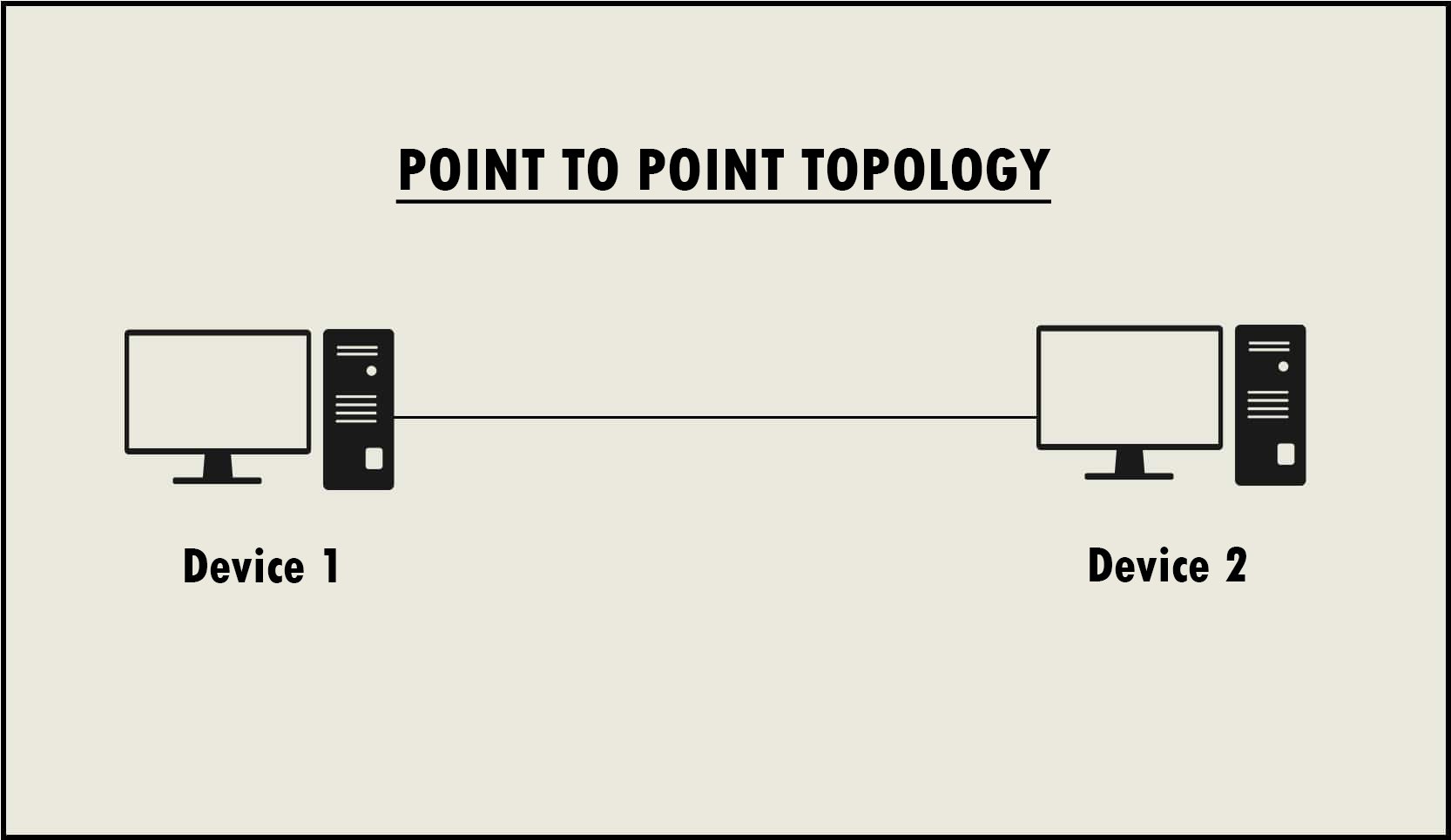What is Point to Point Topology?
Network topology refers to the layout or structure of the network components, such as nodes, cables, and other devices. There are several types of network topologies, like point to point, bus, star, ring, mesh, and hybrid topologies. Out of all these, one of the most widely used network topologies is the point to point topology that enables two devices to connect directly, facilitating faster communication and data transfer.
What is Point to Point Topology?
A point to point topology is a network configuration in which two devices or nodes are directly connected to each other, creating a dedicated communication link between them. This type of topology is often used in scenarios where data needs to be transmitted between two specific endpoints without interference from other devices. It’s commonly employed in technologies like point to point communication lines, such as leased lines or direct cable connections, and can offer high-speed, reliable, and secure connections.
Why should we use it?
It should be used to transmit the signals and the information effectively across the network. As the topology connects the two nodes of the network directly by some wire or any medium it is very effective to transmit the data. The efficiency of the communication increases when the network uses the point to point topology and the data will be in flow in different modes of communication channels. The communication channel includes simplex mode, half-duplex mode, and full-duplex mode of the communication channel. These different modes help to transmit the signals across the network very effectively.

How does it ensure high security in communication between two nodes?
Point to Point topology ensures high security in communication between two nodes by providing a dedicated and private communication link between them. It means that no other device can access the communication link, making it highly secure.
Apart from that, unlike other topologies that need intermediate devices to transmit data (for example, Star topology), point to point topology does not need any intermediate devices to accomplish the same. This further reduces the chances of unauthorized access to the network.
What are the advantages?
- Very easy to maintain. You can replace a wire within a few seconds if the wire has a problem.
- Maximum utilization of the underlying connecting link bandwidth.
- This is the simplest topology compared to any other network topology type.
- Least minor delays in communication as compared to any other network connection type.
- Low-cost option when you have only two nodes to connect
What are the disadvantages of Point to Point Topology?
- The network performance depends on a single link only. If the link is down, the entire network stops working.
- Because of the need for a direct connection, topology can not be expanded to a large area. E.g., if there is a multistory building, two computers may be far apart.
- There is only one server or client. If anyone fails, all will stop working. You can not take advantage of the network cluster. Not suitable for any database servers.
- Only applicable when the two devices are in proximity to each other such as connecting a printer.
Conclusion
Transit and receive functions are used to communicate in the Point to Point Topology. One transmitter and one receiver are located on each end of the communication network in this type of communication network. It is a communication channel in which two nodes or endpoints exchange data. They establish a dedicated communication link between two systems to provide high-bandwidth communication. This is a lightning-fast network structure when compared to the others. The star topology is considered to be the simplest to design and implement. It is much easier to add nodes to a star topology. Network topologies that connect only two hosts directly define point to point topologies.